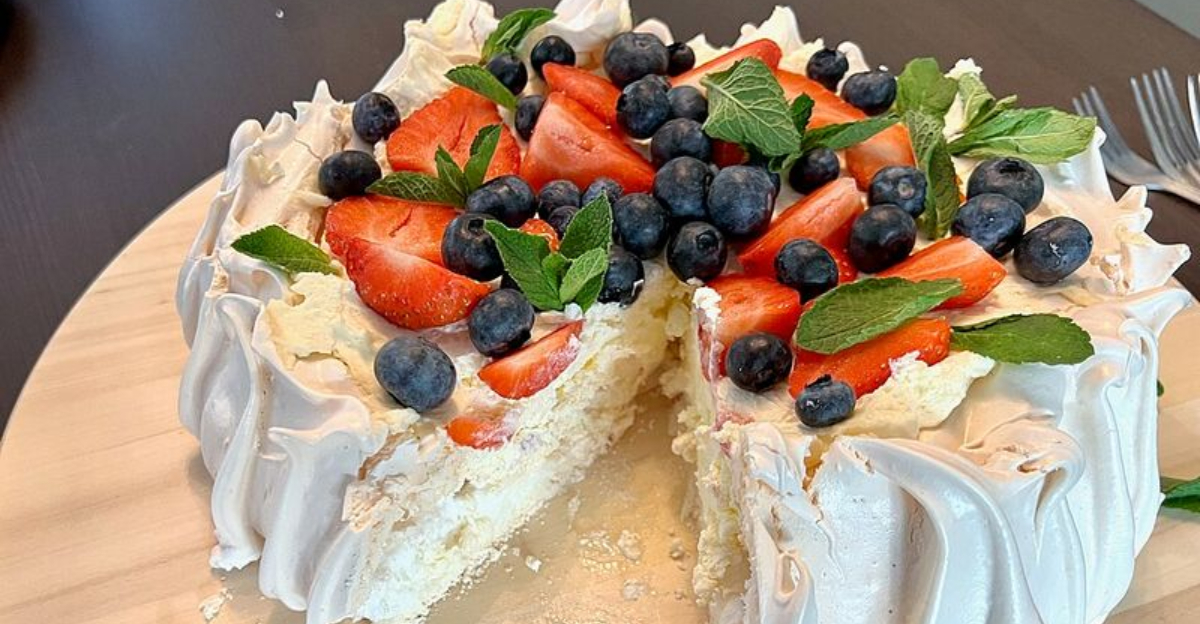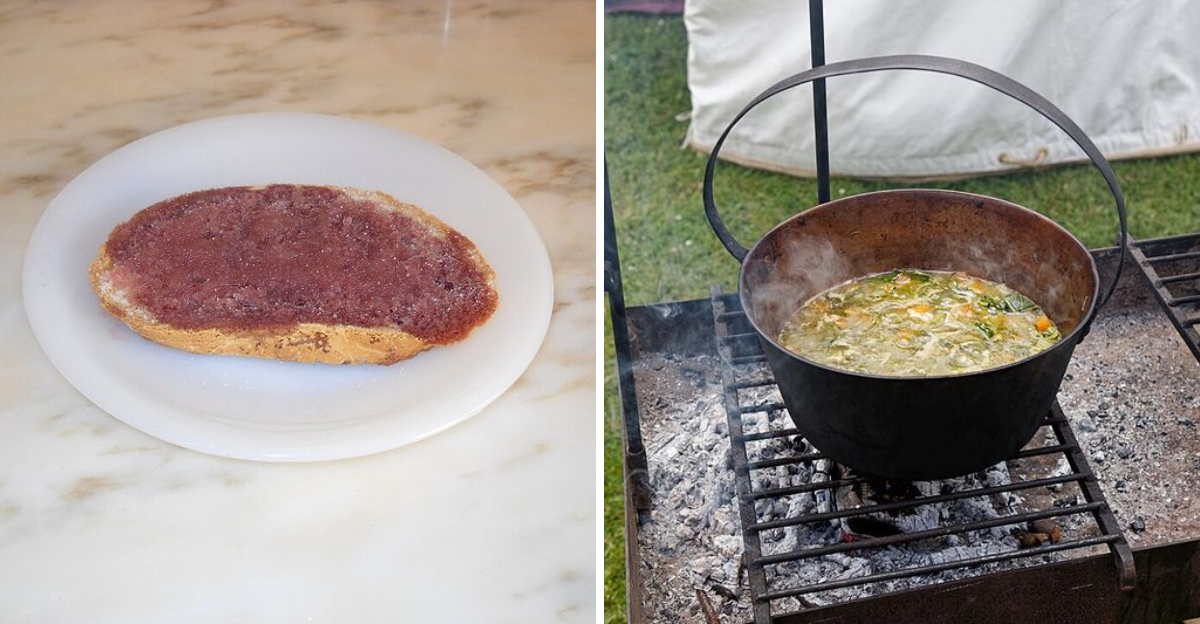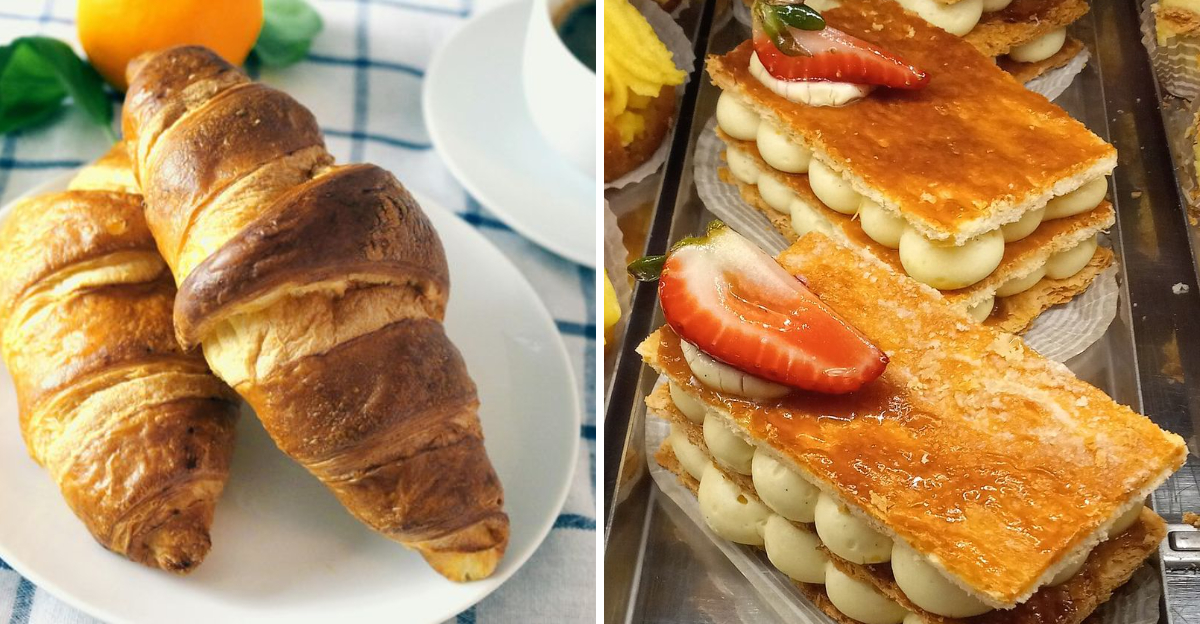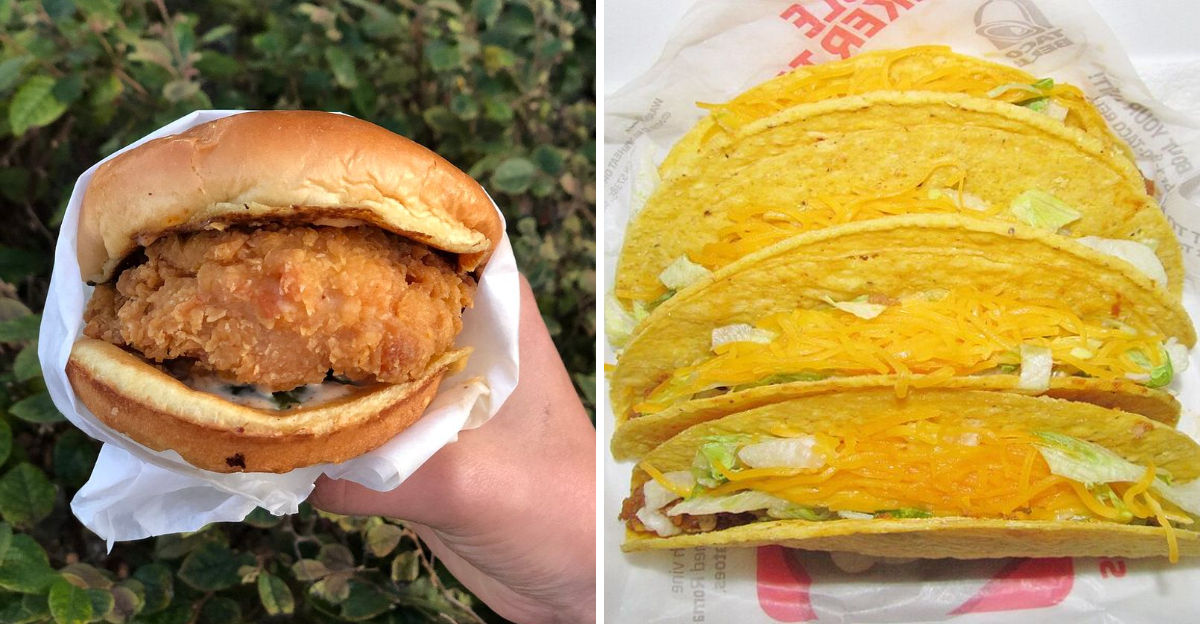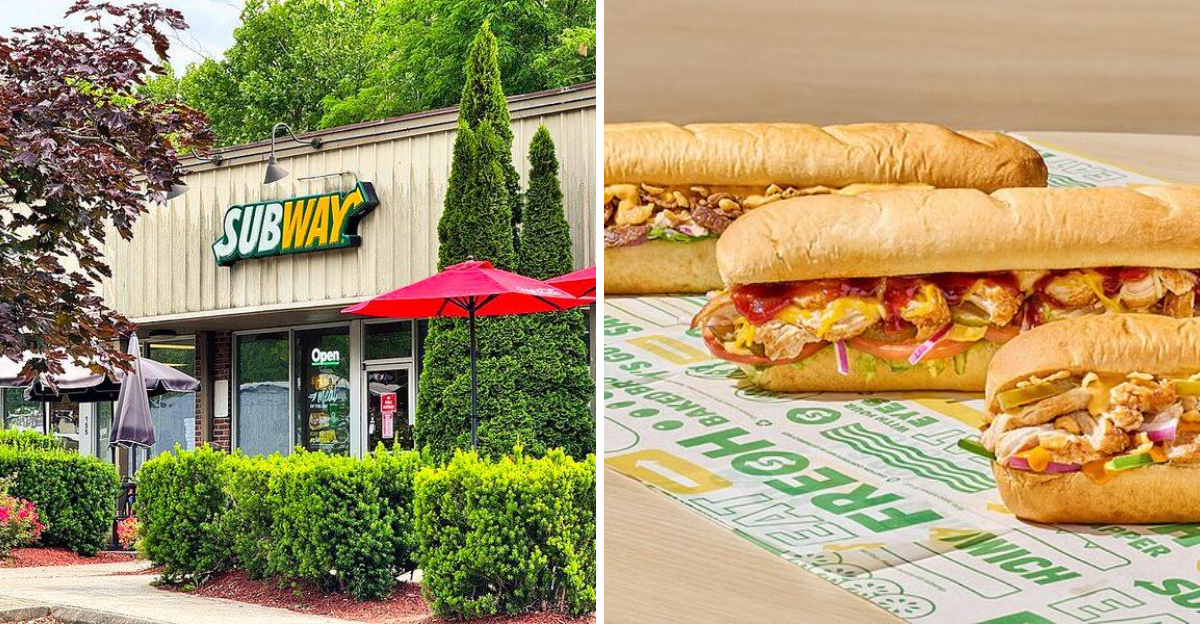When Baklava Meets Cheesecake You Get A Dessert That Defies Convention
Some culinary mashups feel forced, like desperate attempts to go viral on social media. Others feel inevitable, as if two classic desserts were always meant to find each other.
Baklava cheesecake falls firmly into the latter category, a stunning fusion that honors both its Mediterranean and American heritage while creating something entirely new.
1. Building the Phyllo Foundation
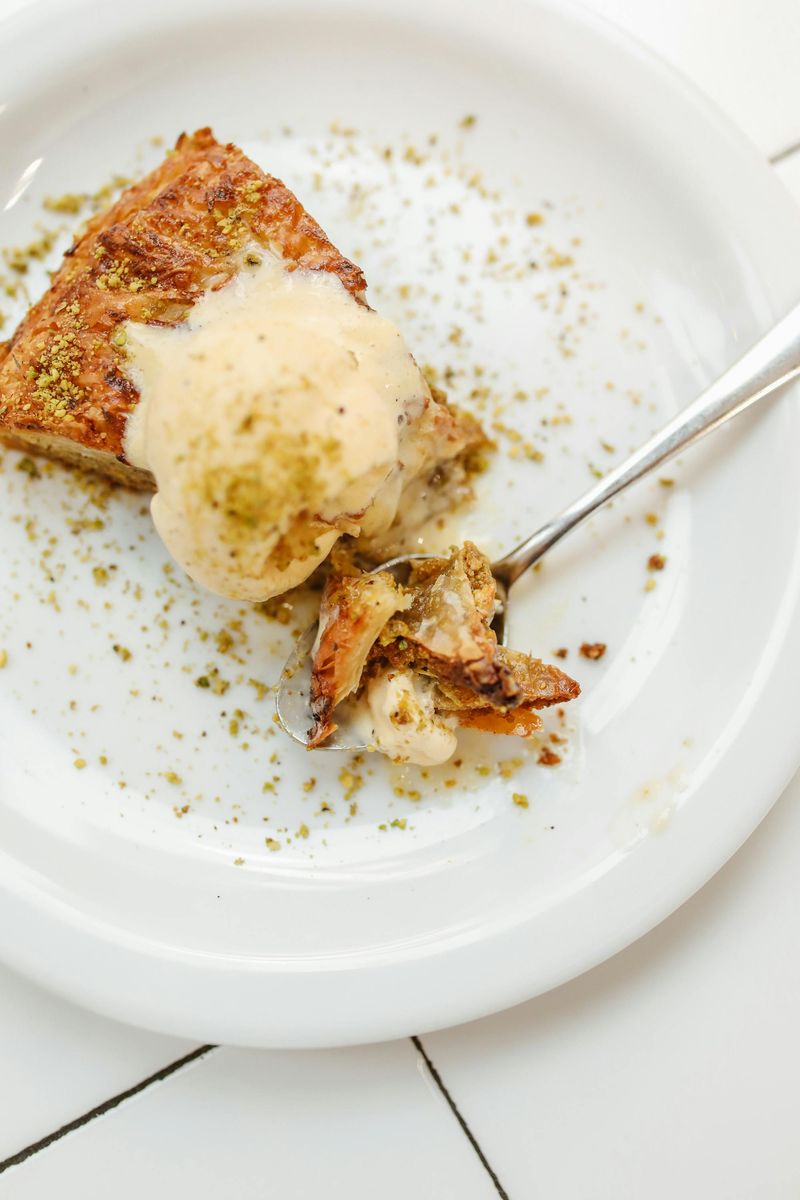
This isn’t a dessert that apologizes for its complexity. The foundation starts with buttered phyllo dough, each of eight sheets brushed with melted butter until they form a crispy, golden base.
Those delicate layers get pressed into a springform pan, creating a crust that shatters satisfyingly under a fork while maintaining enough structure to support everything above.
2. The First Nut Layer
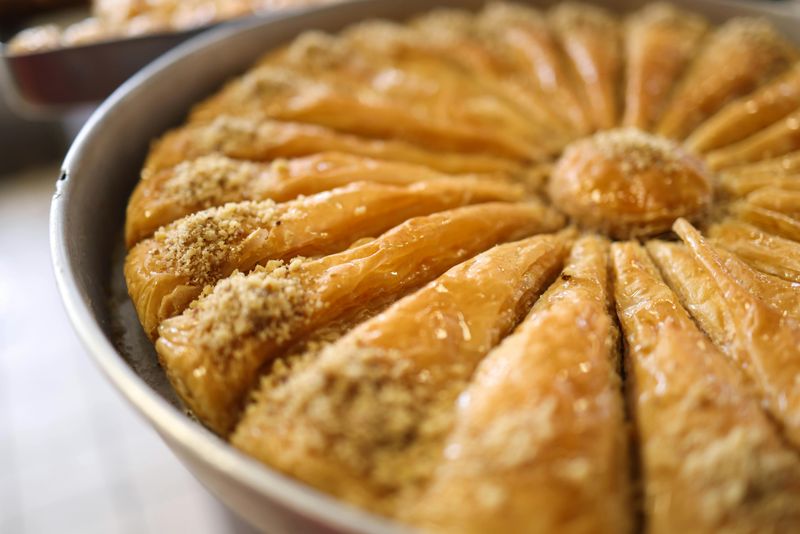
The walnut and pistachio mixture comes next, finely chopped nuts combined with sugar, cinnamon, and a whisper of cardamom.
This blend gets pressed into the phyllo base, adding texture and that distinctive baklava flavor profile that makes the dessert recognizable even before the honey syrup arrives. Half the nut mixture goes here, saving the rest for later.
3. Crafting the Cheesecake Heart
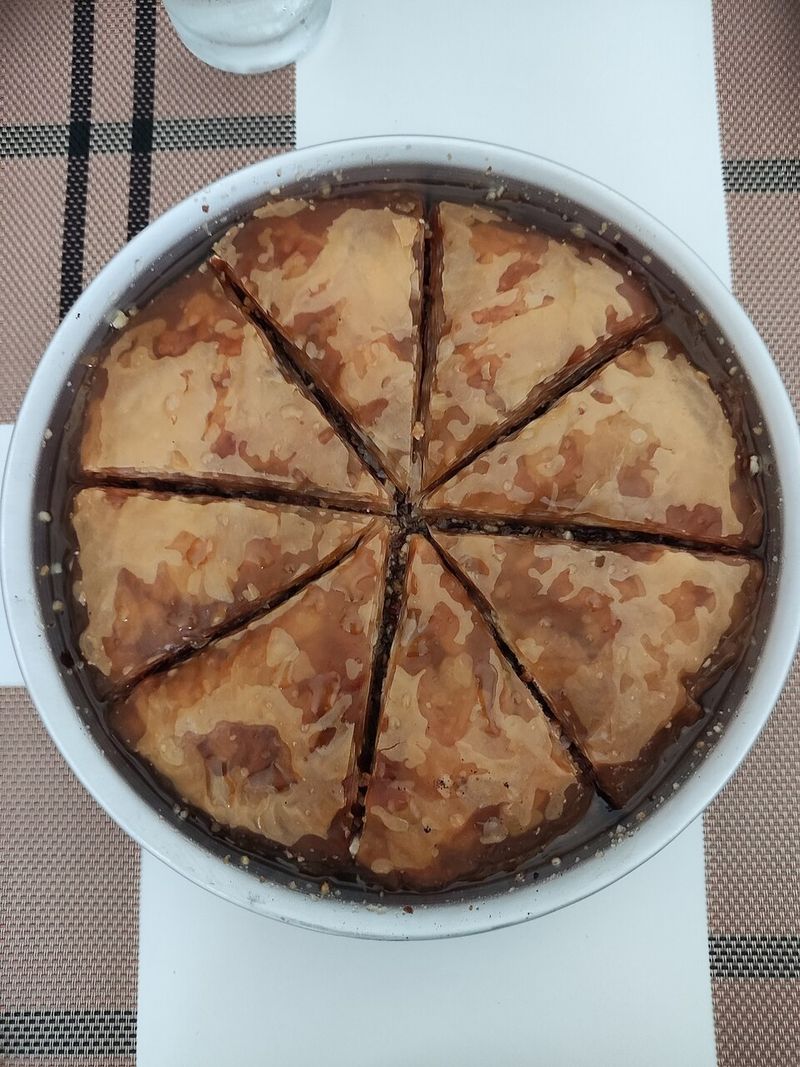
At the center lives a proper cheesecake filling. Twenty-four ounces of room-temperature cream cheese get beaten with sugar until the mixture achieves that signature fluffy smoothness. Three eggs join one at a time, followed by sour cream for tang, vanilla for warmth, and a tablespoon of flour for insurance against cracks.
4. The First Bake
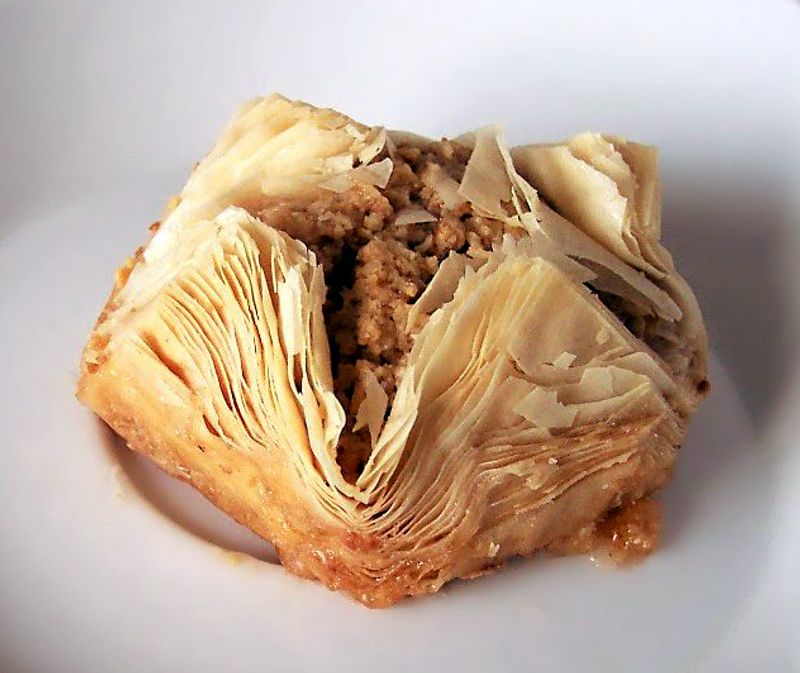
The filling pours over the nut-covered phyllo base and bakes at a gentle 325 degrees for roughly forty-five minutes.
The goal isn’t full firmness, the center should still wobble slightly when the pan gets a gentle shake. That barely-set quality ensures creamy texture rather than rubbery disappointment.
5. Sealing with Phyllo and Nuts
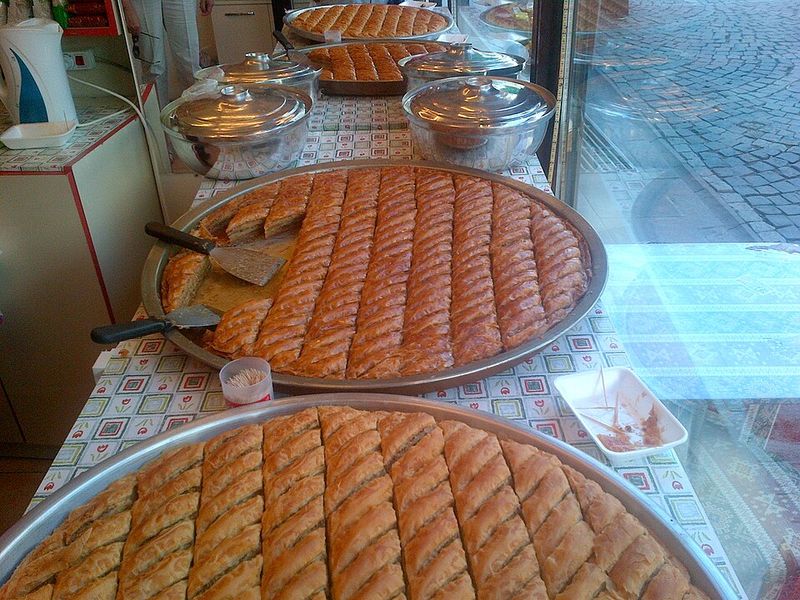
After a ten-minute rest, the remaining nut mixture gets sprinkled across the surface. Then comes the satisfying part: layering eight more sheets of buttered phyllo on top, each one brushed generously before the next goes down.
Any phyllo hanging over the edges from the bottom layer gets folded in, creating a sealed package.
6. Creating the Honey Bath

While the final baking happens, attention turns to the honey syrup. Honey, water, and sugar simmer together with a cinnamon stick and strips of lemon peel, creating an aromatic syrup that reduces slightly over ten minutes.
The cinnamon and lemon get discarded, vanilla gets stirred in, and the syrup cools just enough to avoid shocking the cake.
7. The Golden Finish
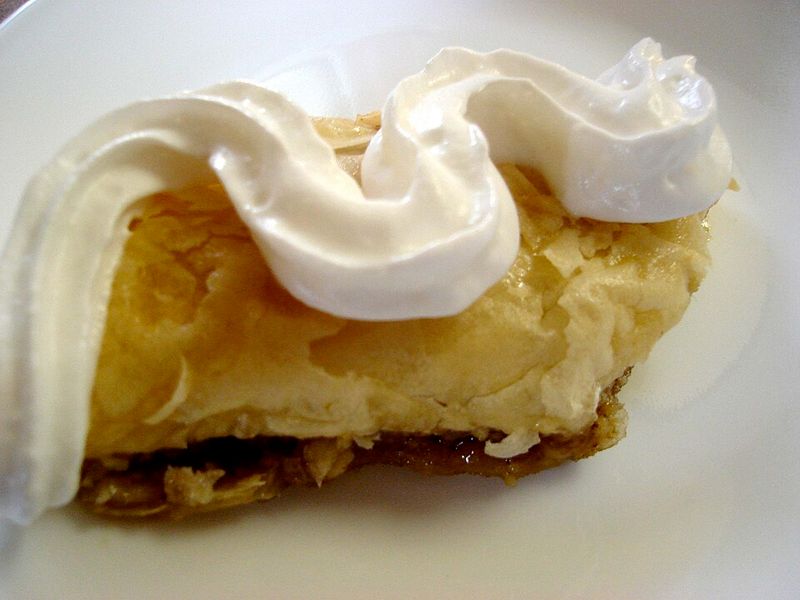
This assembled masterpiece returns to the oven for another twenty to twenty-five minutes. The phyllo needs enough time to achieve that shattering crispness that makes baklava irresistible, turning deep golden and creating pockets of buttery flavor between each paper-thin sheet.
8. The Crucial Soaking Moment
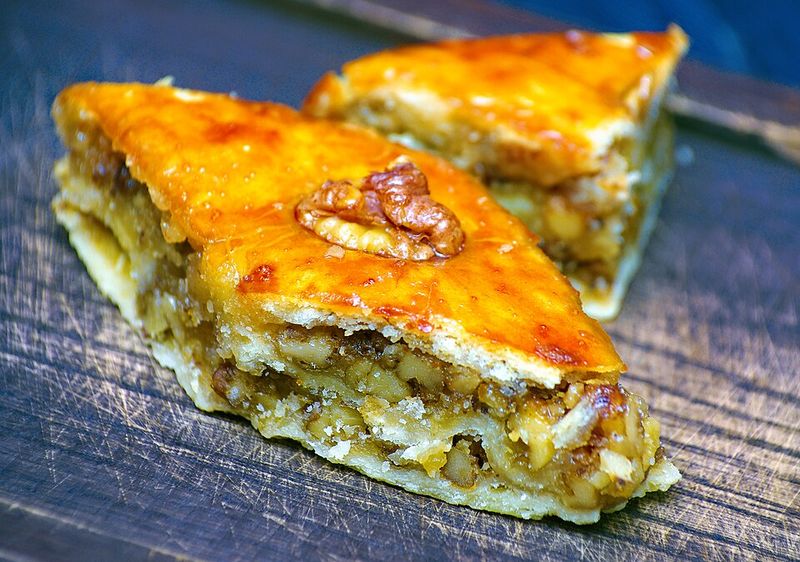
Timing matters here. The syrup needs to meet the cake while both are still warm but not scorching. As soon as the phyllo top emerges golden and crispy from the oven, the syrup gets poured slowly and deliberately over the entire surface.
Every drop matters: the warm cake absorbs the syrup, pulling sweetness and moisture deep into every layer while the phyllo somehow maintains its textural integrity.
9. Why Waiting Makes It Better
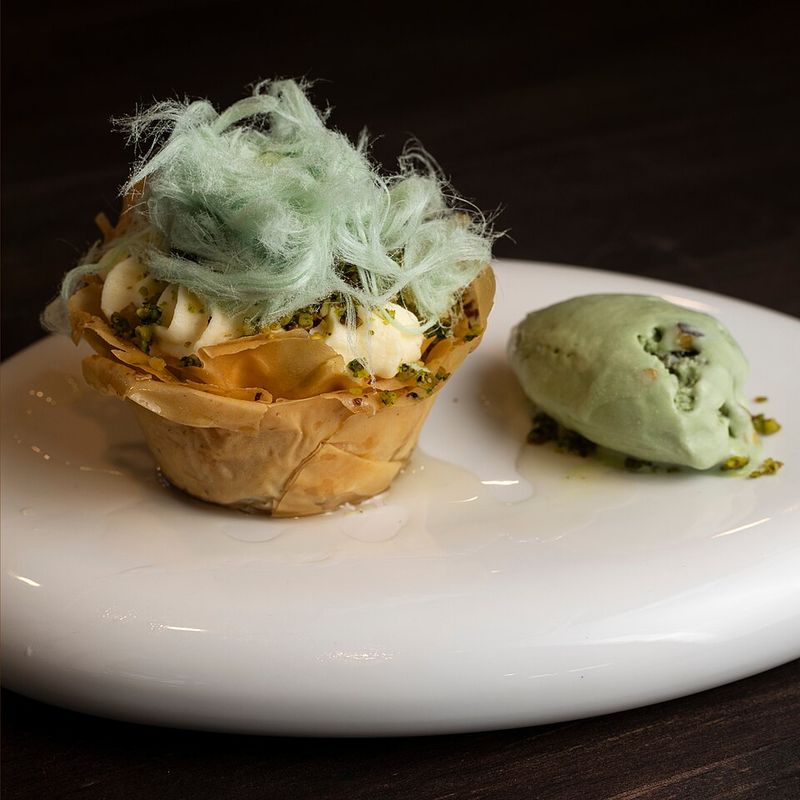
The hardest part comes next: waiting. This dessert needs to cool completely at room temperature, a process taking roughly two hours.
Then it requires refrigeration for at least four hours, though overnight produces superior results. The waiting allows flavors to meld, textures to settle, and the cheesecake to firm properly.
10. The Final Revelation
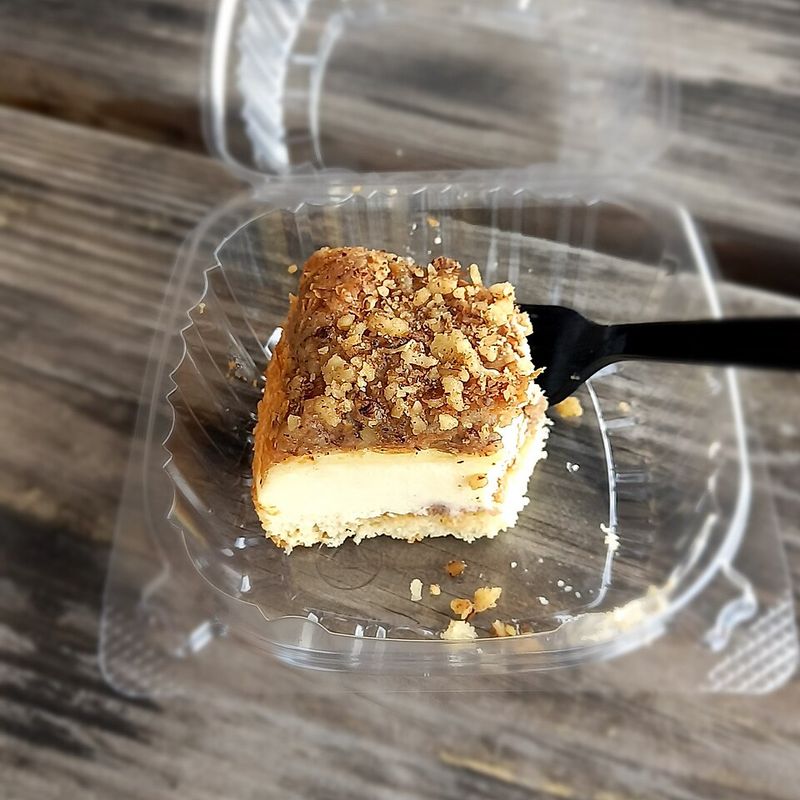
When a knife finally cuts through the chilled dessert, it reveals distinct layers that somehow also taste unified.
The phyllo maintains surprising crispness despite its honey bath. The nuts provide textural contrast and earthy depth. The cheesecake delivers its characteristic richness without overwhelming the more delicate baklava elements.
11. Why This Fusion Actually Works
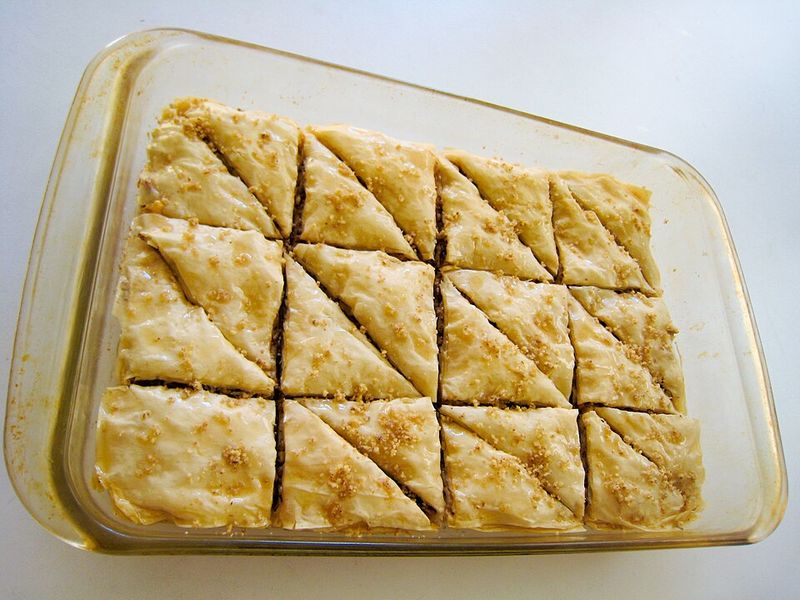
Traditional baklava can edge toward cloying sweetness, while plain cheesecake sometimes lacks complexity. This fusion addresses both potential weaknesses. The tangy cream cheese cuts through honey’s intensity, while the nuts and phyllo add dimensions that cheesecake alone can’t achieve.
The result tastes special without feeling gimmicky: appropriate for holidays, birthdays, or any occasion demanding something beyond standard dessert offerings. The recipe yields enough to serve twelve to sixteen people, and leftovers keep refrigerated for up to five days.
Most tasters agree the dessert actually improves after a day as flavors continue developing.

